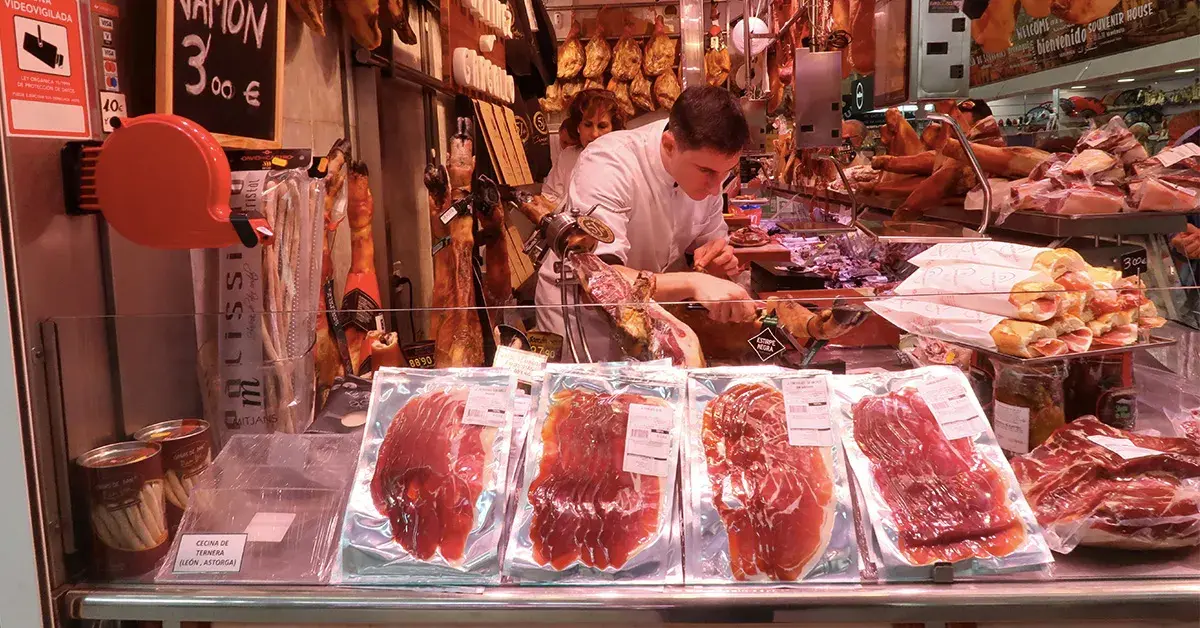Discover the Regional Flavor at Bagley Farms Meat Market Edwardsville IL: Fresh and Delicious
Discover the Regional Flavor at Bagley Farms Meat Market Edwardsville IL: Fresh and Delicious
Blog Article
Discover the Art of the Butcher's Cut in a Modern Meat Market
In the ever-evolving landscape of contemporary meat markets, the butcher's cut has actually transcended its standard roots, merging old-time craftsmanship with modern practices. What truly establishes the modern butcher apart is their ability to forge a much deeper link between customers and the beginnings of their meat.
Development of Butchery Strategies
The development of butchery strategies reflects an abundant tapestry of development and adaptation driven by developments in innovation, modifications in consumer need, and a deeper understanding of meat science. Historically, butchery was a craft gave through generations, with approaches honed over centuries to make best use of yield and taste. Nonetheless, the commercial transformation introduced mechanization, transforming standard practices and allowing massive handling.
The mid-20th century saw butchery strategies even more refined by clinical insights right into muscle mass biology and meat aging, improving both tenderness and taste. Developments like vacuum packaging and refrigeration expanded item shelf-life, enabling butchers to diversify offerings and boost quality control. This period additionally marked the surge of customized equipment, such as band saws and meat slicers, which boosted precision and effectiveness in meat processing.

The 21st century has actually presented digital modern technology right into the butchery world. Electronic systems now assist in monitoring pet provenance and optimizing cuts to satisfy certain customer preferences. Furthermore, a renewal in artisanal butchery has actually arised, blending typical abilities with modern understanding to satisfy consumers looking for moral and lasting meat choices. This advancement highlights a vibrant interplay in between custom and development, meeting contemporary demands while maintaining the craft's heritage.
Understanding Meat Cuts
Comprehending the details of meat cuts is important for both butchers and customers looking for quality and value. For butchers, exact cuts show ability and regard for the craft, ensuring minimal waste and ideal yield.

Understanding muscle mass structure is vital; muscles made use of extra often by the pet have a tendency to be harder and are best matched for slow cooking techniques, while less-used muscles, like those discovered in the loin, are more tender and perfect for barbecuing or roasting. Familiarity with these differences equips consumers to make enlightened choices, boosting their cooking ventures.
Picking Quality Meat
Selecting the right meat includes greater than simply picking a visually enticing piece from the display. bagley farms meat market edwardsville il. The art of choosing high quality meat requires a critical eye and knowledge of particular attributes that symbolize freshness and excellence. Pay attention to the color; beef must have a brilliant, cherry-red color, while lamb needs to show a soft pink tone, and pork a light pink. This shows the meat is fresh and hasn't been revealed to oxygen for also lengthy.
Secondly, think about the marbling, which describes the white streaks of fat within the muscle. Proper marbling is a crucial indication of tenderness and flavor, as it melts throughout food preparation, enhancing the meat's juiciness. Bear in mind, greater marbling typically associates with premium quality cuts, such as USDA Prime.
Texture is one more vital factor; meat needs to really feel solid to the click here for more info touch, not slimy or overly soft. In addition, bear in mind the fragrance. Fresh meat should have a tidy, neutral smell, devoid of any type of sour or off-putting smells.
Coupling Cuts With Food Preparation Techniques

Alternatively, tougher cuts like brisket and chuck roast are rich in collagen, which damages down right into gelatin when cooked slowly. These cuts are excellent for braising or slow roasting, enabling the meat to soften in time and establish deep, intricate flavors. Cuts such as brief ribs and pork shoulder get on well with slow-cooking methods, where expanded cooking times change their robust textures into succulent meals.
Lamb shanks and oxtail, which require extended food preparation to tenderize, are best candidates for stewing or sluggish simmering. These methods coax out abundant, hearty tastes while maintaining dampness. By understanding the unique qualities of each cut, chefs and home chefs alike can elevate their culinary productions, making sure each recipe is both satisfying and unforgettable.
The Butcher's Function Today
Browsing the developing landscape of the modern meat market, the butcher's duty today expands beyond plain preparation view of cuts. Contemporary butchers are cooking artisans, instructors, and supporters for sustainable techniques.
In addition to crafting exact cuts, butchers currently involve directly with clients, supplying cooking guidance and customizing choices to match individual demands and preferences. Their competence in meat aging, marbling, and flavor profiles empowers customers to make educated choices, improving their culinary experiences. This tailored service exhibits the butcher's developing duty as a relied on advisor in the kitchen.
In addition, butchers are essential in decreasing waste, utilizing entire pets to develop varied items such as sausages and supplies. This comprehensive technique not only values the animal but additionally lines up with modern sustainability goals. In this way, the contemporary butcher symbolizes both tradition and innovation, adjusting to an ever-changing market while protecting the virtuosity and honesty of their craft.
Conclusion
Proficiency in understanding varied meat cuts and top quality indicators empowers butchers to supply enlightened recommendations, lining up particular cuts with optimum food preparation approaches. By honoring historic practices while embracing contemporary needs, the butcher's function continues to be essential in today's sophisticated meat market.
Report this page